This article was co-authored by Lydia Shedlofsky, DO. Dr. Lydia Shedlofsky is a Resident Dermatologist who joined Affiliated Dermatology in July of 2019 after completing a traditional rotating internship at Larkin Community Hospital in Miami, Florida. She earned a Bachelor of Science in Biology at Guilford College in Greensboro, North Carolina. After graduation, she moved to Beira, Mozambique, and worked as a research assistant and intern at a free clinic. She completed a Post-Baccalaureate program and subsequently earned a Master's Degree in Medical Education and a Doctorate of Osteopathic Medicine (DO) from the Lake Erie College of Osteopathic Medicine.
There are 21 references cited in this article, which can be found at the bottom of the page.
wikiHow marks an article as reader-approved once it receives enough positive feedback. This article received 11 testimonials and 100% of readers who voted found it helpful, earning it our reader-approved status.
This article has been viewed 662,514 times.
A sebaceous cyst is a benign, closed, firm sac that lies in the skin and often forms a dome-shaped lump attached to the epidermis that can be moved over underlying tissues. [1] It occurs primarily on the face, neck, shoulder, or chest (hair-bearing areas of the body).[2] It is extremely common in the population and may occur at any age. They are not contagious and do not run the risk of developing cancer (in other words, they're benign). However, they can get infected and be a bit unsightly.[3] To start the healing process, start with Step 1 below.
Steps
At-Home Treatment
-
1Use a warm compress over the cyst. A towel that's warmed to 37-40 °C (100-105°F) may be applied 3-4 times a day for no more than 10-30 minutes. This dilates the blood vessels and the warm sensation diminishes the pain by acting as a counter-irritant that masks the pain brought about by the inflammation.[4]
- Sebaceous cysts may be covered if not causing the patient distress; most are non-dangerous and are only bothersome aesthetically. However, if it's infected, seeking medical treatment is wise.
-
2Keep the cyst clean. Be sure to routinely and thoroughly wash the skin with non-irritating antimicrobial soap in running water. Pat dry the skin using a clean cloth or towel and cover with a sterile gauze when it starts to drain – keep the gauze dry at all times.[5]
- Avoid putting cosmetics and skin care products on the site of the cyst. This may cause further irritation and infection.
Advertisement -
3Never pop the cyst on your own. This type of cyst dries up naturally; trying to pop it would put you at risk for further infection and may cause permanent scarring. Resist the temptation -- if it bothers you, get it removed by a doctor.[6]
- If a cyst burst due to healing or accidental popping causing a break in the skin; wash the area thoroughly in running water using a non-irritating antimicrobial soap.
-
4Seek medical intervention if there's a noticeable infection.[7] If signs of infection occur -- pain, swelling, redness, and warmth sensation -- notify your doctor immediately for appropriate medical intervention.[8] It's a very routine procedure and nothing to worry about; however, if left alone, you can become septic, which is a very, very serious condition.
- Even if your cyst doesn't seem infected, you may wish to visit a doctor. A very simple incision will be made, and the cyst can be gone in a matter of minutes. You may need to get 1 or 2 stitches once the cyst is removed.[9]
Medical Treatment
-
1Get on antibiotics.[10] An effective antibiotic to fight the infection will be prescribed as soon as possible. Be sure to finish your course so the infection doesn't weaken and then return. In as little as a week, your cyst will be disappearing.[11]
- Flucloxacillin is one of the most common antibiotics used in the case of an infected sebaceous cyst. Take a 500-milligram pill every 8 hours, for a week, in order to cure the infection.[12]
-
2Have your doctor remove the cyst with a minimally-invasive procedure.[13] Medical intervention is a simple operation in which the cyst is completely removed. Don't worry -- the area around the lesion is numbed with a local anesthetic. Here's what you need to know:[14]
- After the local anesthetic is applied, the surgeon will either perform an oval incision on both sides of the lesion’s center or a single incision down its center. If the cyst is small, the doctor can lance it, instead of cutting it.
- The keratin around the cyst will be squeezed out. A retractor will be used to hold the edges of the incision apart while the doctor will use a forceps to remove the cyst.
- If the lesion is whole when removed, the operation is a success and the cure rate will be of 100 percent.
- If, however, the lesion is fragmented, the wound will be sealed by stitching after the procedure is complete.
- In the case where the cyst was infected, the same antibiotic treatment will be prescribed for a week after the intervention.
-
3Take care of the area post surgery. All the recommendations in the first section hold true after surgery, too. The most important thing is to keep the area clean and not to fuss with it. Do not touch the area, even if your hands are clean. As long as you take care of it, there will be zero complications.[15]
- Identify if sutures were used in wound closure. If so, it is also important to take note when would they need to be removed (1– 2 weeks at most). Note: some type of sutures readily dissolves in the body and may not need removal.
Unverified Home Remedies
-
1Try tea tree oil. The essential oil of the tea tree has some anti-bacterial and anti-inflammatory properties and may be able to help deal with the bacteria causing an infection.[16] However, know that there is little hard science to back up any effect that tea tree oil has on cysts.
- To use the remedy, simply apply 1 or 2 drops of tea tree oil on the lesion and cover it with a band-aid. Use tea tree oil once a day, in the morning, and uncover the lesion at night.
-
2Use castor oil. Castor oil contains ricinoleic acid which has some mild antibacterial and anti-inflammatory effects.[17] Soak a piece of cloth in castor oil and place it on the cyst. Place a hot compress on top of the castor oil-soaked cloth and hold it for 30 minutes. The heat will help the oil diffuse into the skin a lot easier. [Image:Treat an Infected Sebaceous Cyst Step 6.jpg|center]]
- Again, the science is lacking. It may potentially have some antibacterial effects, but its efficacy on cysts is dubious. It likely will not be harmful, and can help moisturize the skin, but there are likely many other products more effective than castor oil.[18]
-
3Use aloe vera. Aloe contains phenolic compounds which may have antibiotic properties.[19] Apply aloe vera gel directly on the lesion and gently rub it until it penetrates the skin. Repeat the process each day, until the infection is cured.
- Aloe vera is a treatment that has been used for centuries.[20] However, once more, there's no good evidence that it can cure cysts.
-
4Experiment with apple cider vinegar. The main compound found in apple cider vinegar is acetic acid. It has antiseptic properties, which could reduce infection-causing bacteria. This, however, is very general and does not specially apply to cysts. In other words, do not rely on this remedy alone.[21]
- Always dilute apple cider vinegar before applying it to the skin. Some apple cider vinegar in stores can be strong enough to cause chemical burns to the skin if not diluted. Even if diluted, people with sensitive skin may still experience irritation. Be cautious when applying this to your skin!
- Apply the diluted vinegar on the affected area and cover it with a bandage. Remove the bandage after 3 or 4 days. You will notice that a hard layer is formed on top of the lesion.
- When you remove the crust or when it naturally falls off, pus will ooze out along with the bacteria. Clean the area and apply a new bandage, without vinegar. After 2 or 3 days, the cyst should be healed.
-
5Use dandelion. Boil a bag of dandelion dried herb in four cups of water. Simmer for 45 minutes after boiling and drink the tea 3 or 4 times per day. Continue to use the treatment for about a week.
- Dandelion is an herb containing taraxacin, which is a natural antibiotic.[22] However, it's unknown whether consuming the taraxacin in dandelion tea has any effect on cysts. Medical treatment is much more effective for cyst removal than any herbal remedy.
-
6Use an herbal antiseptic or antibiotic cream in your cleaning regimen if you'd like. You can try one of the following:
- Guava leaves. Put whole guava leaves in a clay pot full of boiling water for 15 minutes. Let it cool until a tolerable temperature is achieved – lukewarm temperature is ideal. Use the solution to wash the wound.
- Aloe vera. After thorough washing and patting dry, generously apply the sap of the plant to the break in the skin and leave it to dry. You can do this several times a day if you'd like.
- As a precaution, you should always test a small amount of any of these homemade treatments for any allergic reaction. A good site to test this is in the forearms on the same side as your palms – their fair complexion and relatively thin skin make it easier to feel and notice any itching and redness.
Causes and Complications
-
1Know that abnormal cell proliferation is a cause. The skin surface is made out of keratin, a thin layer of cells which protects the skin. The keratin layer is continuously shed and replaced with a new batch of cells. Instead of a normal exfoliation, the cells can move deeper into the skin and continue to proliferate. Keratin will be secreted towards the inside of your body, creating a cyst.[23]
- This is, in itself, not harmful or dangerous -- it's simply not aesthetically pleasing. It's only if a tumor or infection develops that this abnormal proliferation is something to worry about.
-
2Be aware that it can be triggered by a damaged hair follicle. Sounds pretty harmless, huh? Even just a hair follicle can create a sebaceous cyst.[24] If you were worried you were suffering from some serious health problem, know that it can really just be because of a hair.
- When this is the cause, a small pocket of modified skin found in the dermis, which is the second layer of the skin, is referred to as a hair follicle. Each hair grows from one of these pockets. Follicles damaged by a constant irritating factor or surgical wound will suffer damage and scarring, leading to an ingrown hair.
-
3Know that an infection makes a cyst more serious. If a cyst is ruptured, bacteria can contaminate it, leading to infection. The cyst will become painful and will start to resemble a pimple. It will ooze pus as well as moist keratin deposits. The area around it will be red and slightly swollen. If this happens, you need to seek medical treatment.[25]
- If the infection goes untreated, it will get worse and worse and can eventually affect your entire body. While a cyst itself isn't anything to be greatly concerned about, an infected cyst does require action.[26]
-
4Know that inflammation can occur quite easily. Even if a cyst is not infected, it can still become inflamed. If the cyst is constantly exposed to an irritating factor, such as rubbing against a rugged fabric, it will become inflamed.
- Luckily, it's usually fairly easy to reduce the inflammation, either with NSAIDs (like ibuprofen) or just to remove the irritating factor.[27]
- An inflamed cyst is difficult to remove because the area is vulnerable to infection. If a minor surgical procedure is necessary, it may be postponed until the inflammation goes away.
-
5Be aware that rupture can happen. A ruptured cyst will trigger an immune reaction if a foreign material infiltrates your skin. This will cause a collection of pus called an abscess to form. This is more likely to happen in large cysts. A ruptured cyst is better off seen by a doctor.[28]
- A burst cyst needs to be kept as clean and hygienic as possible. Visit your doctor for advice on how to care for the cyst and what medical treatment you should seek.
Expert Q&A
Did you know you can get expert answers for this article?
Unlock expert answers by supporting wikiHow
-
QuestionHow do I know if my cyst is a sebaceous cyst?
 Lydia Shedlofsky, DODr. Lydia Shedlofsky is a Resident Dermatologist who joined Affiliated Dermatology in July of 2019 after completing a traditional rotating internship at Larkin Community Hospital in Miami, Florida. She earned a Bachelor of Science in Biology at Guilford College in Greensboro, North Carolina. After graduation, she moved to Beira, Mozambique, and worked as a research assistant and intern at a free clinic. She completed a Post-Baccalaureate program and subsequently earned a Master's Degree in Medical Education and a Doctorate of Osteopathic Medicine (DO) from the Lake Erie College of Osteopathic Medicine.
Lydia Shedlofsky, DODr. Lydia Shedlofsky is a Resident Dermatologist who joined Affiliated Dermatology in July of 2019 after completing a traditional rotating internship at Larkin Community Hospital in Miami, Florida. She earned a Bachelor of Science in Biology at Guilford College in Greensboro, North Carolina. After graduation, she moved to Beira, Mozambique, and worked as a research assistant and intern at a free clinic. She completed a Post-Baccalaureate program and subsequently earned a Master's Degree in Medical Education and a Doctorate of Osteopathic Medicine (DO) from the Lake Erie College of Osteopathic Medicine.
Dermatologist
References
- ↑ https://my.clevelandclinic.org/health/diseases/14165-sebaceous-cysts
- ↑ https://www.mayoclinic.org/diseases-conditions/epidermoid-cysts/symptoms-causes/syc-20352701
- ↑ https://my.clevelandclinic.org/health/diseases/14165-sebaceous-cysts
- ↑ https://www.mottchildren.org/health-library/tw6860
- ↑ https://www.mottchildren.org/health-library/tw6860
- ↑ https://my.clevelandclinic.org/health/diseases/14165-sebaceous-cysts
- ↑ Lydia Shedlofsky, DO. Dermatologist. Expert Interview. 11 November 2020.
- ↑ https://my.clevelandclinic.org/health/diseases/14165-sebaceous-cysts
- ↑ https://www.hopkinsmedicine.org/health/conditions-and-diseases/sebaceous-cysts
- ↑ Lydia Shedlofsky, DO. Dermatologist. Expert Interview. 11 November 2020.
- ↑ https://my.clevelandclinic.org/health/diseases/14165-sebaceous-cysts
- ↑ https://academic.oup.com/jac/article/71/7/2037/1751243
- ↑ Lydia Shedlofsky, DO. Dermatologist. Expert Interview. 11 November 2020.
- ↑ https://www.aafp.org/afp/2002/0401/p1409.html
- ↑ https://www.mottchildren.org/health-library/tw6860
- ↑ https://www.ncbi.nlm.nih.gov/pmc/articles/PMC1360273/
- ↑ https://thedermreview.com/castor-oil/
- ↑ https://thedermreview.com/castor-oil/
- ↑ https://pubmed.ncbi.nlm.nih.gov/33746401/
- ↑ https://www.nccih.nih.gov/health/aloe-vera
- ↑ https://health.clevelandclinic.org/skin-tags-and-cysts-when-you-shouldnt-diy/
- ↑ https://pubmed.ncbi.nlm.nih.gov/25644491/
- ↑ https://www.ncbi.nlm.nih.gov/books/NBK499974/
- ↑ https://www.nhs.uk/conditions/skin-cyst/
- ↑ https://www.hopkinsmedicine.org/health/conditions-and-diseases/sebaceous-cysts
- ↑ https://my.clevelandclinic.org/health/diseases/14165-sebaceous-cysts
- ↑ https://www.nhs.uk/conditions/bakers-cyst/treatment/
- ↑ https://www.betterhealth.vic.gov.au/health/conditionsandtreatments/cysts
- Bickley, L. S. (2012). Bates' Guide to Physical Examination and History-Taking 11th edition. Philadelphia: Lippincot, Williams, & Wilkins.
- Hall, J. C., & Sauer, G. (2000). Sauer's Manual of Skin Diseases 8th edition. Philadelphia: Lippincott, Williams, & Wilkins.
- Johnston, R. B. (2012). Weedon's Skin Pathology Essentials. Spain: Churchill Livingstone.
- Obi, E., Baker, C., Teo, J., & Teo, M. (2005). Rapid: Surgery. Victoria, Australia: Blackwell Publishing.
About This Article
To treat an infected sebaceous cyst, place a warm towel over the affected area for 10 to 30 minutes 3 to 4 times a day. Additionally, wash the skin with an antimicrobial soap and avoid putting any skin care products or cosmetics on the cyst. You can also apply 1 to 2 drops of tea tree oil every morning to help kill the bacteria and lessen any inflammation. Alternatively, rub aloe vera gel, which has antibiotic properties, on the lesion once a day. To learn how to medically treat an infected sebaceous cyst, keep reading!
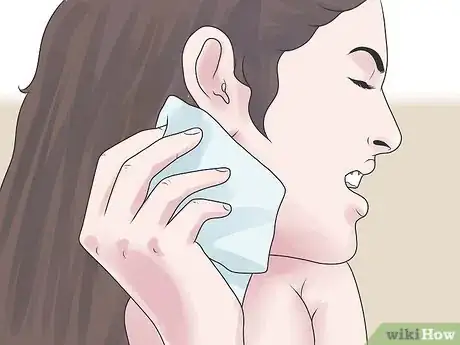
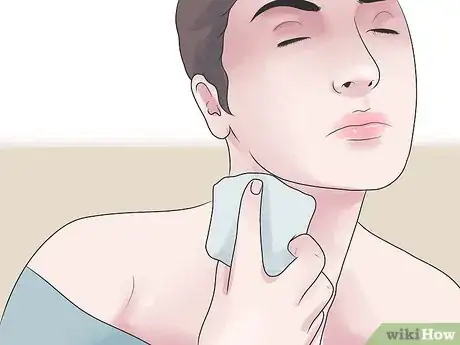
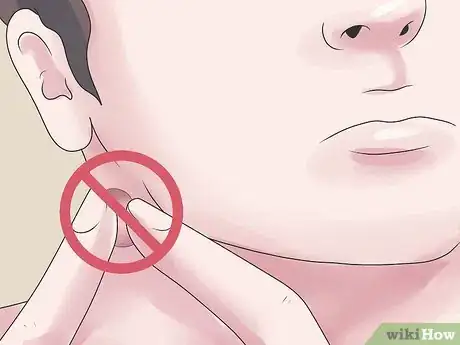



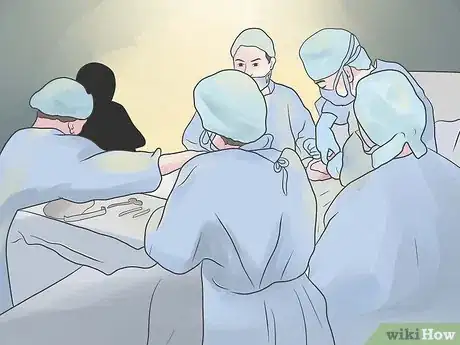
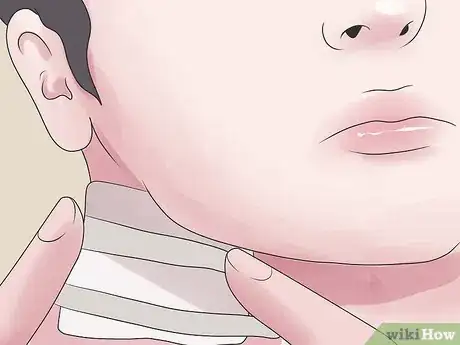
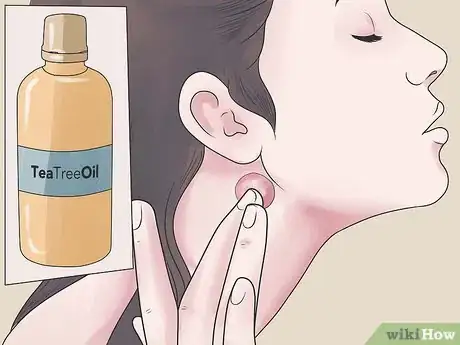
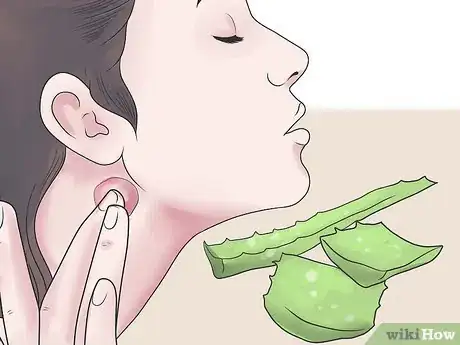
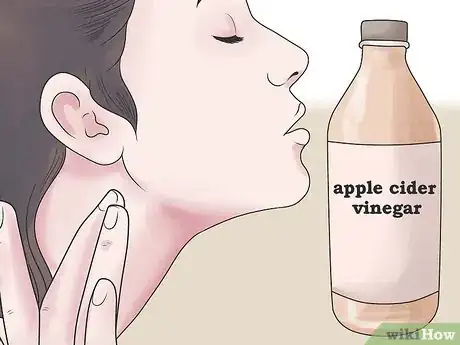
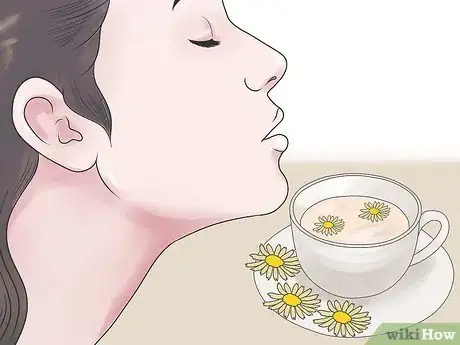
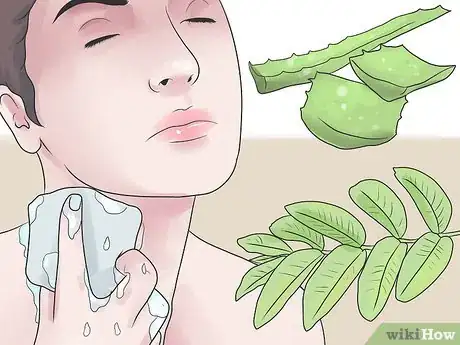
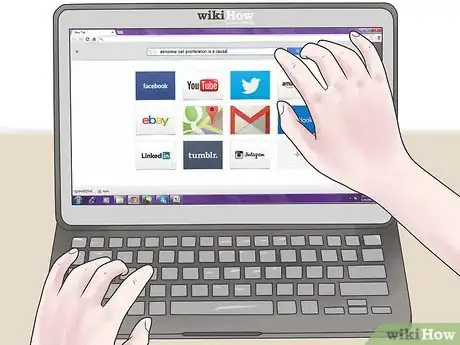
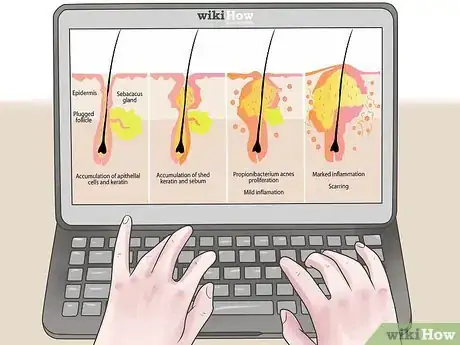

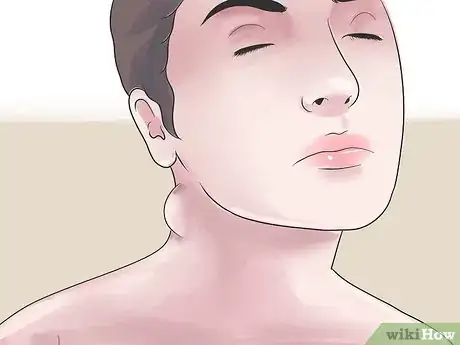


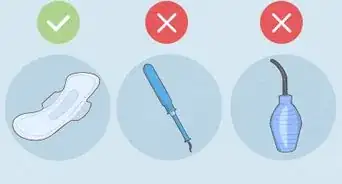



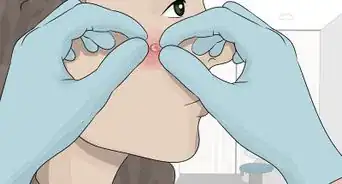
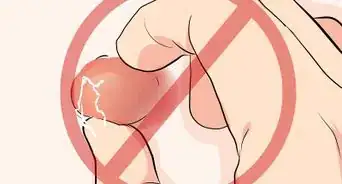

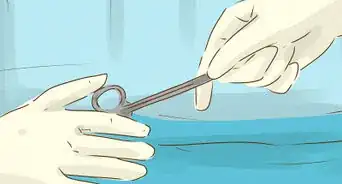
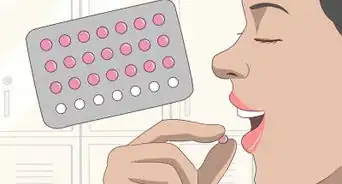
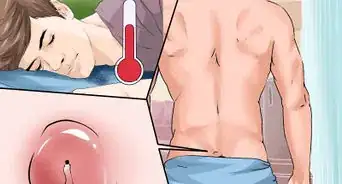

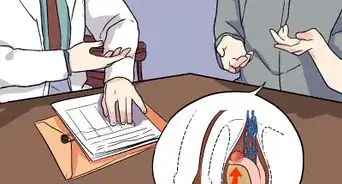
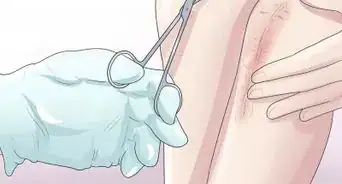








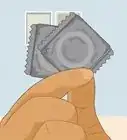
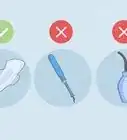

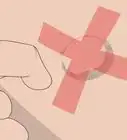




































Medical Disclaimer
The content of this article is not intended to be a substitute for professional medical advice, examination, diagnosis, or treatment. You should always contact your doctor or other qualified healthcare professional before starting, changing, or stopping any kind of health treatment.
Read More...